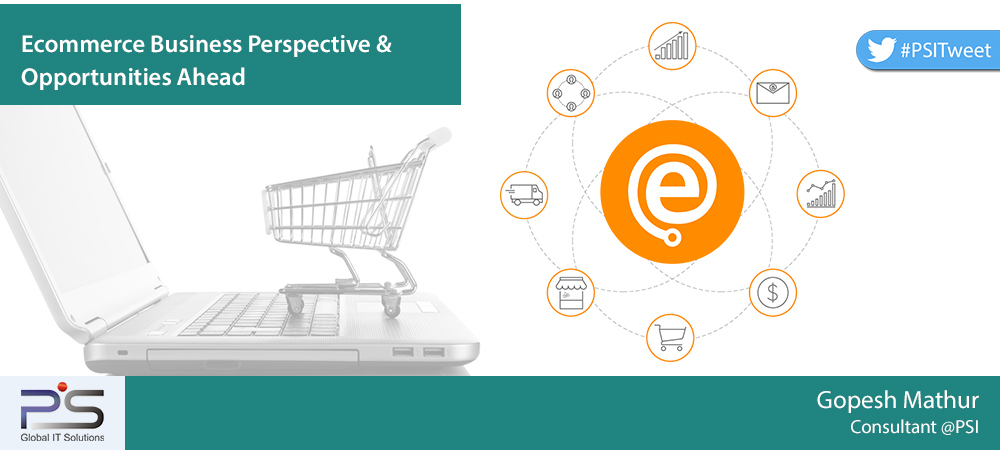
What Indians love today is e-tailing…
Recent Gartner reports suggest that India is the fastest growing ecommerce market in Asia-Pacific region. The Indian ecommerce market is estimated to reach $6 billion in 2015, a 70 percent increase over 2014 revenue of $3.5 billion. These figures help us understand the dynamics and opportunities in the industry. The ecommerce industry is at its peak in the Indian consumer scenario today. Ecommerce vendors are today on an expansion spree to widen their base and are investing in the platforms, logistics and marketing activities.
Nevertheless, limited internet penetration, logistics challenges, higher interest rates and low average order value is constantly pressurizing the feasibility of B2C ecommerce platforms. Most of the giant offline businesses have taken an online route to cater to the existing and potential customer base. With the expanding businesses, the associated problems are also growing exponentially. Be it delivery issues, frauds and failures at payment gateways, return of packages, and mobile version of websites all contribute to customer and business woes.
How to grab the right opportunities with a flawless ecommerce business model and a robust platform for B2C interface:
- Improving the ecommerce landscape: The businesses should plan and focus on integrating the vertical chain. The brands should consider both back-end and front-end integration starting from raw materials to after sales services. The location specific independence helps businesses leverage on budget constraints. They can focus on niche market segments to satisfy the urge to serve innovative and new products when customers visit your website.
- Customer Relationship Management: The businesses need to have a planned approach to understand the customer lifecycle, the value generated by customers at different stages of lifecycle, segmenting and targeting the right prospective customers, the loyalty benefits to customers and businesses. The businesses have to engage with the customers at all levels of interactions to create interest in their minds.
- Conversion Rate Optimisation (CRO): Most of the organisations tend to get carried away with the inbound traffic to their websites. They forget that conversions are more important from sales perspective. The centre point of a business is CRO and overall customer experience.
- Evolving Digital Landscape: The digital markets are expanding towards the mobile revolution, which creates immense opportunities for mobile commerce. The buying process is just a finger scan away. Social media is another untapped opportunity to explore in case of retail sales which can drive mass sales volume and acquire huge customer base.
- Improving customer experience: Everything revolves around the customer and businesses are constantly trying to improve the customer experience and satisfaction levels. They can provide personalised goods and services by understanding the customers’ demographics and purchasing behaviour. They can focus on smart merchandising like providing insights about the related purchases/products made by other customers. Also bundling of similar products will drive sales.
- Robust Ecommerce platform: The website in first place is required to be customer friendly. The responsive website should be easy to navigate through different category stores, user friendly and secure payment gateways, easy to track orders placed, multi channel customer care, easy cancellation and quick refund policy are some of the basic required features. The product description about the material, size, quality standards and other features help customers select the product easily. Also checkout processes and other relevant details like shipping costs, delivery schedule all form a considerable part of ecommerce transaction. These all form a part of customer touch points and are crucial from business perspective.
These point out the basic characteristics an ecommerce enterprise must include to excel in this field. With a strong technological framework any entity can dream and achieve their objectives seamlessly. All thanks and credits to the changing consumer landscape, ecommerce promises to be a lucrative and financially viable option for any established or budding entrepreneurs/start-ups.What Indians love today is e-tailing…
Recent Gartner reports suggest that India is the fastest growing ecommerce market in Asia-Pacific region. The Indian ecommerce market is estimated to reach $6 billion in 2015, a 70 percent increase over 2014 revenue of $3.5 billion. These figures help us understand the dynamics and opportunities in the industry. The ecommerce industry is at its peak in the Indian consumer scenario today. Ecommerce vendors are today on an expansion spree to widen their base and are investing in the platforms, logistics and marketing activities.
Nevertheless, limited internet penetration, logistics challenges, higher interest rates and low average order value is constantly pressurizing the feasibility of B2C ecommerce platforms. Most of the giant offline businesses have taken an online route to cater to the existing and potential customer base. With the expanding businesses, the associated problems are also growing exponentially. Be it delivery issues, frauds and failures at payment gateways, return of packages, and mobile version of websites all contribute to customer and business woes.
How to grab the right opportunities with a flawless ecommerce business model and a robust platform for B2C interface:
- Improving the ecommerce landscape: The businesses should plan and focus on integrating the vertical chain. The brands should consider both back-end and front-end integration starting from raw materials to after sales services. The location specific independence helps businesses leverage on budget constraints. They can focus on niche market segments to satisfy the urge to serve innovative and new products when customers visit your website.
- Customer Relationship Management: The businesses need to have a planned approach to understand the customer lifecycle, the value generated by customers at different stages of lifecycle, segmenting and targeting the right prospective customers, the loyalty benefits to customers and businesses. The businesses have to engage with the customers at all levels of interactions to create interest in their minds.
- Conversion Rate Optimisation (CRO): Most of the organisations tend to get carried away with the inbound traffic to their websites. They forget that conversions are more important from sales perspective. The centre point of a business is CRO and overall customer experience.
- Evolving Digital Landscape: The digital markets are expanding towards the mobile revolution, which creates immense opportunities for mobile commerce. The buying process is just a finger scan away. Social media is another untapped opportunity to explore in case of retail sales which can drive mass sales volume and acquire huge customer base.
- Improving customer experience: Everything revolves around the customer and businesses are constantly trying to improve the customer experience and satisfaction levels. They can provide personalised goods and services by understanding the customers’ demographics and purchasing behaviour. They can focus on smart merchandising like providing insights about the related purchases/products made by other customers. Also bundling of similar products will drive sales.
- Robust Ecommerce platform: The website in first place is required to be customer friendly. The responsive website should be easy to navigate through different category stores, user friendly and secure payment gateways, easy to track orders placed, multi channel customer care, easy cancellation and quick refund policy are some of the basic required features. The product description about the material, size, quality standards and other features help customers select the product easily. Also checkout processes and other relevant details like shipping costs, delivery schedule all form a considerable part of ecommerce transaction. These all form a part of customer touch points and are crucial from business perspective.
These point out the basic characteristics an ecommerce enterprise must include to excel in this field. With a strong technological framework any entity can dream and achieve their objectives seamlessly. All thanks and credits to the changing consumer landscape, ecommerce promises to be a lucrative and financially viable option for any established or budding entrepreneurs / start-ups.[:]








